Order Coronatae Genus Periphylla Higher classification Periphylla | Scientific name Periphylla periphylla Rank Species | |
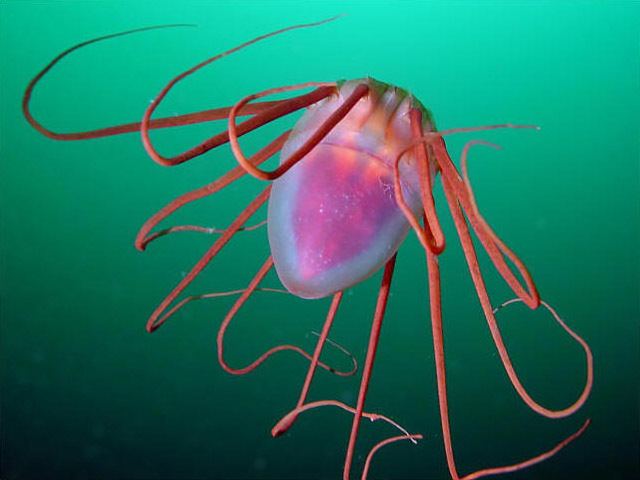 | ||
Similar | ||
The helmet jellyfish (Periphylla periphylla) is a luminescent, red-colored jellyfish of the deep sea, belonging to the order Coronatae of the phylum Cnidaria.
Contents

Reproductive cycle
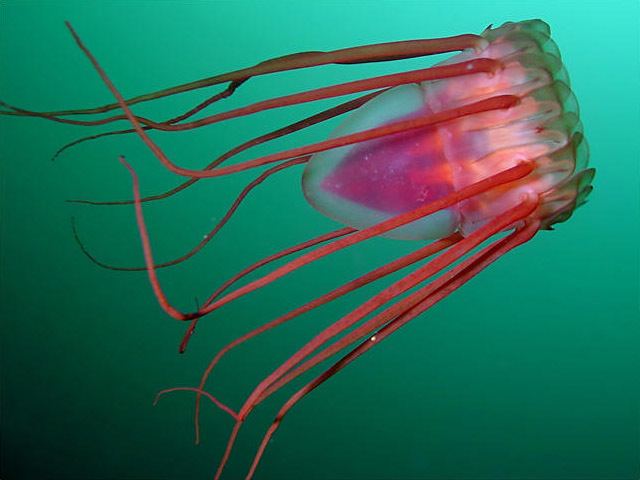
P. periphylla represents an exception, very rarely found in the phylum Cnidaria: the medusae go through no polyp stage, thus presenting a "holopelagic" life cycle. The medusae strew fertilized eggs in open water and these develop directly into medusae, whose development rests entirely upon the egg's high yolk supply. The ephyra stage common among other jellyfish is not to be observed in P. periphylla.
Life style
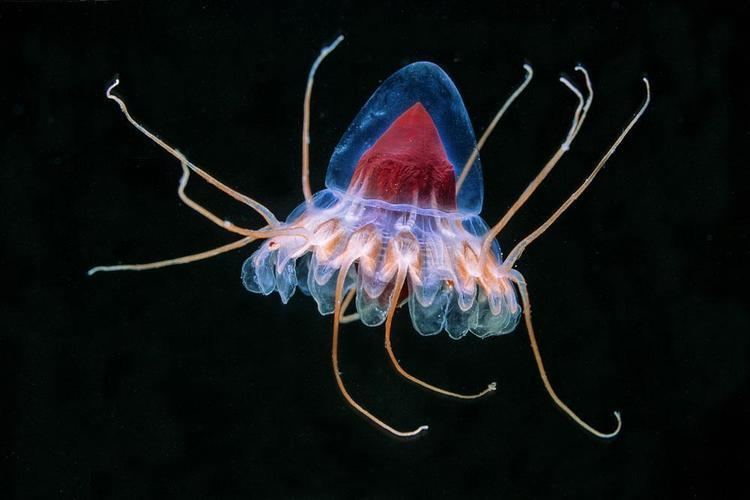
The jellyfish is found in depths up to 7,000 m and is adapted to its dark environment. A weight of up to a ton per square centimeter presses upon the animals, which live in deep sea.
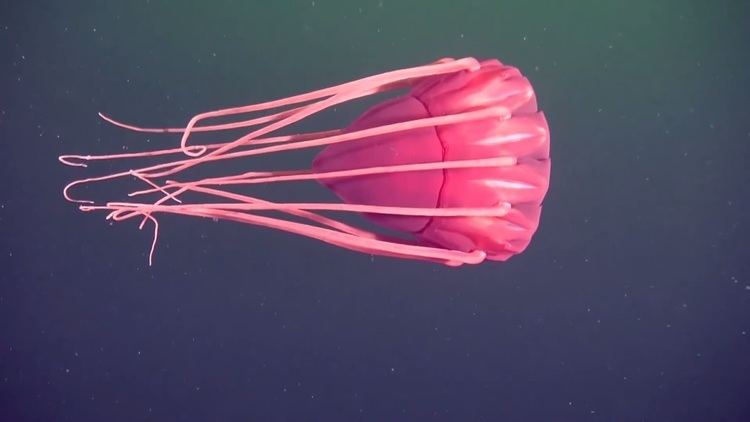
At night the helmet jellyfish leaves the depths and swims up toward its food, plankton. With full stomach it turns from the surface back to the depths. Other deep-sea inhabitants feed upon its faeces.
Description
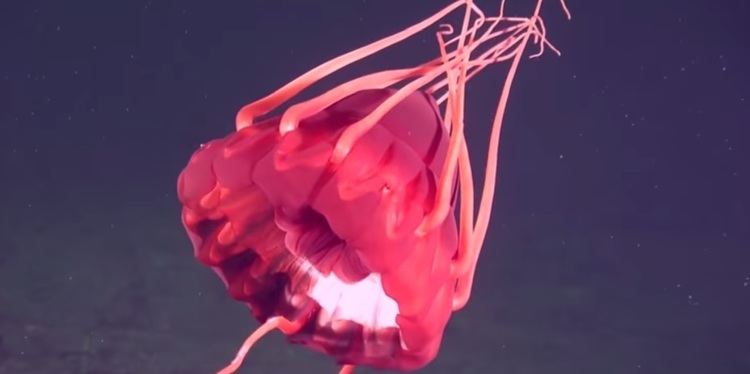
Helmet jellyfish reach a body size of up to 30 cm. They consist 90% of water, the rest being tissue and gelatinous mass, which give the animals their form. They light themselves from within by means of bioluminescence, the red flashes serving as a signal amongst themselves. Between their marginal lobes sit small sense bulbs, by which the helmet jelly can distinguish between light and dark; they have been observed to avoid light.
Distribution
The helmet jelly is found in every ocean of the world, as well as in the Norwegian fjords and in the Mediterranean Sea.
Current ecological problems
In many fjords of Norway the helmet jelly has proliferated since the 1970s. It has become a competitor of fish for food and is thereby also a threat for the fishing industry. These jellyfish should have been deprived of their own food basis by displacement by almost all other sea creatures, yet the medusae swarms still live.
The cause is being studied at this time by marine biologist Ulf Båmstedt. Also not far from Bergen, in the Lurefjord, helmet jellies have proliferated. The objective is to find a possible explanation for the new mass development. The ecology and population dynamics will be investigated by Norwegian and American work groups. The ontogeny, in particular the development of pigmentation, luminescence, food absorption and sense capacity, will be researched in a Hamburg work group.
